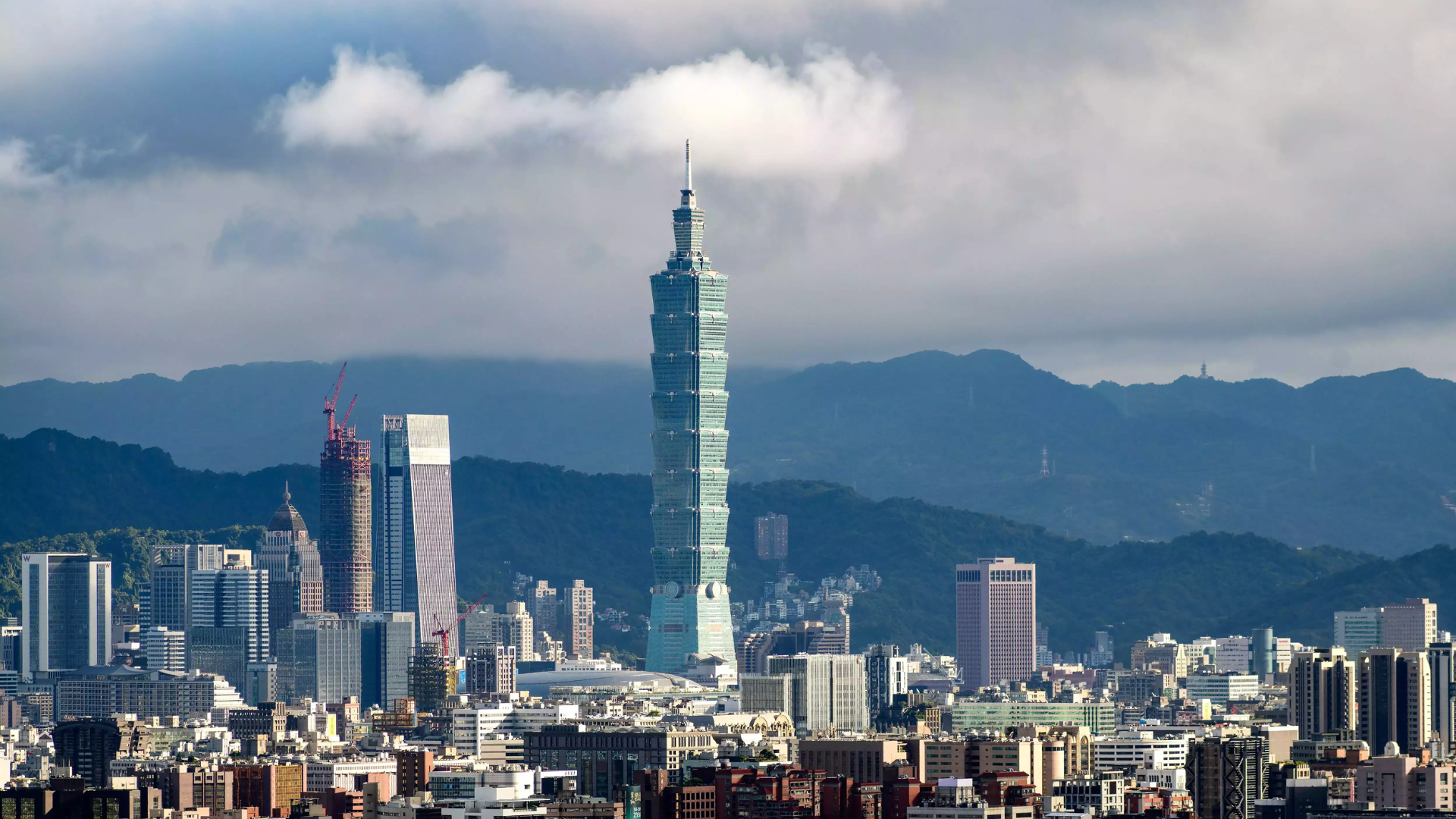










Taiwan’s tallest skyscraper, Taipei 101, recently faced a test of its engineering prowess during a 7.4-magnitude earthquake, emerging with minimal damage. The success of this iconic building in withstanding such a powerful quake can be attributed, in part, to its innovative design featuring a giant pendulum, as reported by CNN.
Known affectionately as “Damper Baby,” this unique feature at the heart of Taipei 101 is a Tuned Mass Damper (TMD), a 660-metric-tonne steel sphere suspended over 1,000 feet above the ground. This massive yellow pendulum plays a crucial role in absorbing shocks during seismic events or strong winds, helping to counteract the building’s movement. According to the news outlet, the pendulum can reduce the building’s sway by up to 40%.
Located between the 87th and 92nd floors, the spherical damper is constructed from 41 steel layers, measuring nearly 18 feet in diameter. It swings within a limited range of 59 inches, preventing excessive movement and maintaining stability even during extreme conditions.
Once hailed as the world’s tallest building, Taipei 101 continues to stand as a landmark skyscraper in Taiwan, showcasing the ingenuity of its engineering to protect against earthquakes in a region prone to seismic activity.
The Technicalities of the Wind-Damping Ball
The wind damping ball, or Tuned Mass Damper (TMD), is a passive system designed specifically for the needs of tall buildings like Taipei 101. Its primary function is to mitigate swaying caused by strong winds, ensuring a comfortable environment for occupants. Unlike traditional concealed damping systems, Taipei 101’s TMD is not only functional but also an aesthetic attraction. Visitors to the observation deck can witness the damping system’s operation, providing an insight into its functionality.
How the Tuned Mass Damper Works
According to information from the Taipei 101 website, the spherical damper within the skyscraper moves back and forth in response to earthquakes or typhoons, which are common occurrences on the island. This movement absorbs the force of intense swinging, as explained on the website. Engineers of the damper claim that it can significantly reduce the building’s movement by up to 40%, thereby minimizing the discomfort experienced by occupants.
Closed-circuit TV footage capturing the Taipei skyline during the recent earthquake demonstrates the minimal movement of the pagoda-shaped skyscraper. In contrast, a security camera positioned on another building shows significant shaking, highlighting the effectiveness of Taipei 101’s innovative damper system.
The success story of Taipei 101 and its “Damper Baby” serves as a testament to the importance of innovative engineering in ensuring the safety and stability of skyscrapers, especially in earthquake-prone regions.









